-
About
- About Listly
- Community & Support
- Howto
- Chrome Extension
- Bookmarklet
- WordPress Plugin
- Listly Premium
- Privacy
- Terms
- DMCA Copyright
- © 2010-2025 Boomy Labs

 Clare Rafferty
Clare Rafferty
Listly by Clare Rafferty
This is the list of apps from our presentation for STAV 2013.

share, distribute and collect tasks, give feedback and more a must for an iPad 1:1 environment
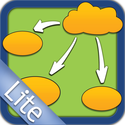
Create a variety of mind maps - with this free app you can have 5 maps at any one time

MYSTERIES OF THE UNSEEN WORLD takes players on a spectacular journey into the nano-world. Familiar items from our everyday lives become beautifully abstract and unidentifiable under the lens of an electron microscope, and it takes skill and imagination to figure out what one is really looking at. Quizzes and puzzles will challenge players' ability to decipher the unseen in the world around us.

With goREACT, you can become a virtual chemist. Whether you're a novice or expert, the free play and guided modes make it fun and fascinating.

Virtual Heart lets you explore multiple real-time views of the human heart, using the same highly realistic visual elements as the iconic Giant Heart at the Museum of Science and Industry, Chicago. This vibrant 13-foot-tall animated heart from MSI's YOU

Get clues, analyze data, solve the case, and save lives! In this fun app, you get to beare the Disease Detective. Do you quarantine the village? Interview people who are sick? Run more lab tests?
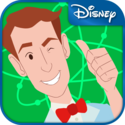
Bill Nye The Science Guy® 20th Anniversary App—of Science! Science rules, especially when you grab a seat at The Science Guy's desk and help yourself to heaping handfuls of science. Just scan your thumb to gain entrance to Nye Labs, the most amazing, scientifically fascinating place on Earth (and possibly beyond!).
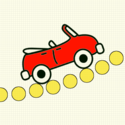
PhyDios is an interactive, immersive way of learning physics. Design, Play, Learn, Share, Challenge, Comment, and do more. Unleash your creativity.
It is a great simulation tool to experience physics –using your own hands. Use simple drawing tools to build elaborate worlds, your own game, projects and even a quiz using rigid bodies, fluids, pivots, springs, ropes, rods, layers, motors, magnet, killer, immortal.
With PhyDios we motivate students to learn physics while having fun at it. Only your imagination can hold you back
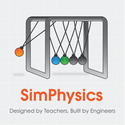
SimPhysics, a collection of 50 games with over 350 levels to help you deeply engage with the physics behind rollercoasters, cannons, cars, cameras, lenses, mirrors, charges, magnets, electricity, free body diagrams, waves, tires, helicopter blades, swings, gravitation, friction, towing and more!

This highly interactive Exploriment App lets you explore the effect of gravity on weight and mass on different planets. You can also explore the effect of altitude on weight and mass and even of depth below the Earth’s surface. Use variety of instruments and free fall of a body to understand the effect of gravity in different scenarios. This app provides ample opportunities to try out various scenarios and compare the results across planets and varying altitudes, including scenarios of micro-gravity and near-weightlessness.
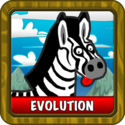
Catch your prey! Immerse yourself in the competitive mindset of an animal. Strategize your predators in order to catch the zebra, antelope and boar.

Learn about various living things such as animals and plants, sort them into different categories and discover where they fit into the food chain with this fun science activity for kids.
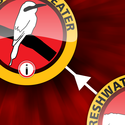
The Food Webs app lets you play with feeding relationships between unique plants and animals found in Western Australia.

Tembo's Pangea Safari is an ecosystem sim game about food webs and the fragility, resilience and interdependence of species.
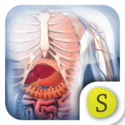
earn about the body's major organ systems with an excerpt from Spongelab's stunning Build-a-Body series. Choose organs from the organ tray, drag and drop them in their correct position within the body to build each system. Complete all systems and then assemble them into a complete body. Top the leader board in this "gut-sy" game, get bonus credits and points for your free Spongelab.com account and gain access to hundreds of educational science games and media including the complete Build-a-Body series.

This app simulates the sort of vision that a person might experience using a bionic eye. The bionic eye is a retinal implant, placed at the back of the eye to restore a sense of vision for people with profound vision loss due to degenerative conditions of the retina. An external camera captures the visual scene and sends data to the implant. Electrodes on the implant electrically stimulate the nerve cells in the retina, providing a sense of vision. In this app, each spot of light that appears represents one electrode.
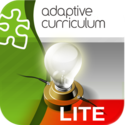
Using 3D graphics and 2D electronic symbols, you will assemble different types of series circuits using wires, switches, batteries, and light bulbs. In order to better understand the difference between a series and a parallel circuit, build a circuit that illuminates two bulbs and observe what happens when one light bulb is removed.
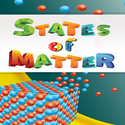
Discover the fundamental nature of matter and understand different kinds of matter.
Based on classical learning, it explains three states of matter and tells you about the property of the state.
You can read, listen and assess your learning on states of matter. Simulation tells you about the motion of atoms within the particular state.
By using this App, A children can easily figure out solid, liquid and gas. Atom’s density clearly shows the difference of these 3 states.

The Nearpod platform enables teachers to use their iPads to manage content on students' iPads, iPhones or iPods. It combines presentation, collaboration, and real-time assessment tools into one integrated solution.

i-nigma turns your camera into a sophisticated barcode reader.
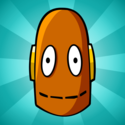
Learn something new every day with the free BrainPOP UK Featured Movie App for the iPad, iPhone, and iPod touch!
Watch a different animated movie each day, then test your new knowledge with an interactive quiz. Topics tie in to current events, historical milestones and figures, holidays, and more. Site subscribers can log in and access all BrainPOP content directly from the app.
